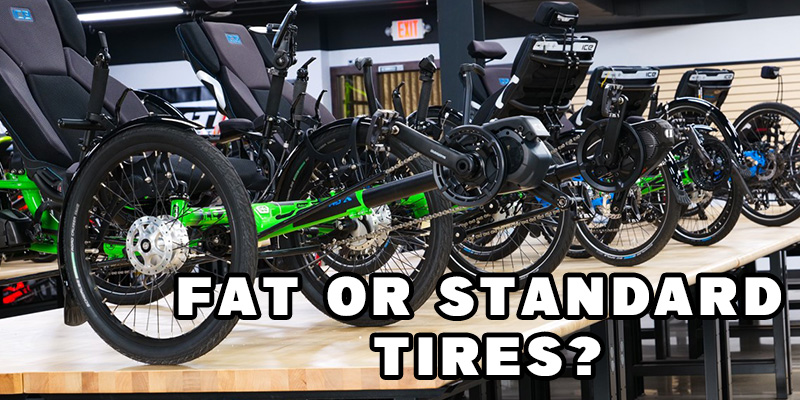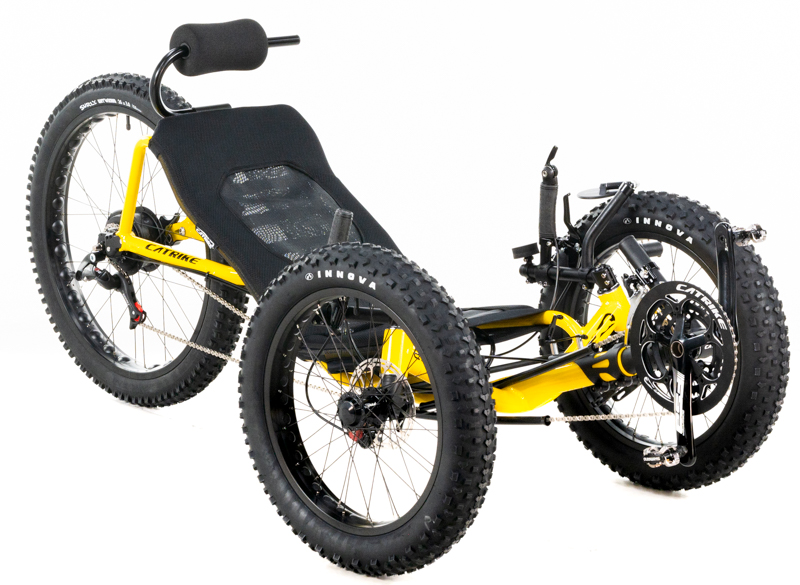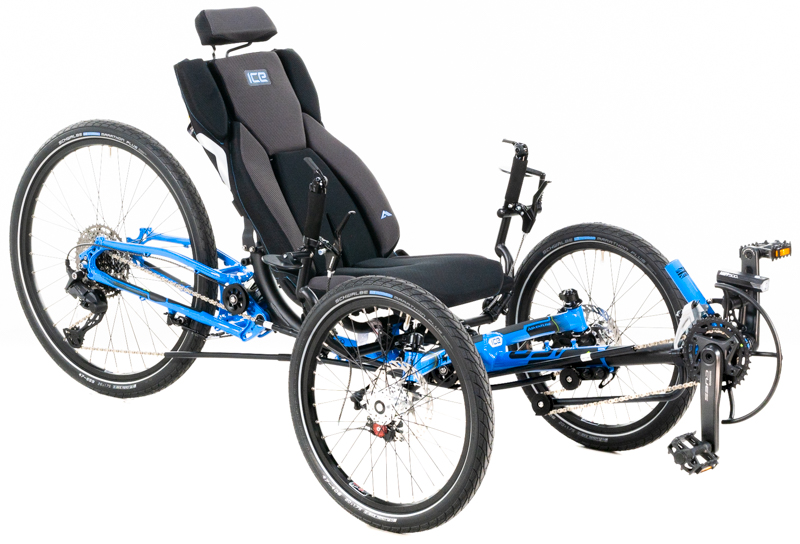

Fat Tire vs. Standard Tire Trikes: Which is Better for Your Ride?
Published on 10/10/2024
When it comes to choosing a trike, the tire type can make a significant difference in performance, comfort, and the kinds of terrain youíll be able to conquer. Fat tire trikes and standard tire trikes each have their unique advantages, and selecting the right one depends on your riding needs, environment, and personal preferences. Hereís a breakdown of the key differences between fat tire and standard tire trikes to help you decide which is the best fit for you.
What Are Fat Tire Trikes?
Fat tire trikes are characterized by their extra-wide tires, generally between 3.5 and 5 inches in width, providing greater surface area for traction and stability. Originally developed for extreme conditions like snow, sand, and mud, fat tires distribute weight more evenly, making it easier to ride on soft, slippery, or rough surfaces. These tires also have a larger volume, which allows them to run at lower pressures for a smoother, more cushioned ride.
Advantages of Fat Tire Trikes:

- Enhanced Traction: Perfect for sandy beaches, snowy trails, or muddy paths, fat tires grip the ground better on soft or loose surfaces.
- Improved Stability: The wider tire provides more stability, which is beneficial for riders looking to feel secure on rough terrain or at lower speeds.
- Shock Absorption: The larger tire volume allows for lower air pressure, which helps absorb bumps and reduces jolts from rocks, roots, and uneven terrain.
Disadvantages of Fat Tire Trikes:
- Increased Rolling Resistance: Fat tires create more friction with the ground, which means more effort is required to pedal, especially on pavement.
- Slower Speeds on Smooth Roads: Due to the increased rolling resistance, fat tire trikes are generally slower and less efficient on smooth, paved surfaces.
- Heavier Weight: Fat tires and their frames are typically bulkier and heavier, which can be challenging if you need to lift, store, or transport the trike frequently.
What Are Standard Tire Trikes?

Standard tire trikes feature narrower tires, usually between 1.5 and 2 inches wide, designed for efficiency and speed on paved roads and packed trails. These tires are lighter and have lower rolling resistance, which makes them ideal for riders looking to commute or ride longer distances with less exertion.
Advantages of Standard Tire Trikes:
- Better Efficiency on Pavement: Standard tires are designed for smooth surfaces and require less effort to pedal, making them ideal for commuting or fitness rides.
- Higher Speeds: With less rolling resistance, standard tire trikes can reach higher speeds on paved surfaces and hard-packed trails.
- Lightweight: Standard tires and frames are typically lighter, making these trikes easier to transport, store, and maneuver.
Disadvantages of Standard Tire Trikes:
- Limited Traction on Soft or Loose Terrain: Standard tires are not well-suited for sandy, snowy, or muddy environments, where they are more likely to sink or lose grip.
- Less Stability: The narrower tire provides less stability, especially on uneven or slippery surfaces.
- Reduced Shock Absorption: Standard tires operate at higher pressures, which can lead to a bumpier ride on rough terrain.
Choosing the Right Tire for Your Riding Needs
Now that we know the benefits and drawbacks of each type, letís look at specific scenarios to see which tire is better suited for your riding style and goals.
1. Urban Commuting
Best Choice: Standard Tire Trike
Why?: Standard tire trikes are designed for smooth, paved roads, which makes them efficient for urban commuting. Their lightweight design and lower rolling resistance allow you to travel at higher speeds with less exertion.
2. Off-Road Adventures
Best Choice: Fat Tire Trike
Why?: If you enjoy exploring trails, beaches, or unpaved paths, a fat tire trike will offer the stability and traction needed for these rough terrains. The wider tires also help you stay balanced and comfortable over rocks, roots, and other obstacles.
3. Winter Riding
Best Choice: Fat Tire Trike
Why?: For snowy or icy conditions, fat tires provide better grip and stability, allowing you to safely navigate through slippery surfaces. Running these tires at lower pressures can also improve control in challenging winter conditions.

4. Long-Distance Touring
Best Choice: Standard Tire Trike
Why?: If covering long distances is your goal, a standard tire trikeís lower rolling resistance and lighter weight make it ideal for maintaining a steady pace over time. Youíll save energy on smoother roads, making long rides more enjoyable.
5. Mixed Terrain
Best Choice: Depends on the Ratio of Rough vs. Smooth Surfaces
Why?: If youíre planning to tackle both smooth and rough surfaces, think about the terrain youíll encounter most often. If itís primarily paved with occasional off-road paths, a standard tire trike might be a good option. However, if you expect more rugged conditions, a fat tire trike could be the better choice.
Additional Considerations
Cost and Maintenance
Fat tire trikes generally cost more than standard tire trikes due to the larger tires and additional frame reinforcement. Maintenance can also be slightly higher for fat tires, as they may wear faster and require frequent air pressure adjustments to accommodate different terrains.
Electric Assist
If youíre considering an electric assist trike, fat tire models can benefit significantly from the added power, helping offset the extra rolling resistance and weight. An electric assist can make a fat tire trike more versatile and suitable for longer or hilly rides.
The choice between a fat tire and a standard tire trike ultimately depends on where you ride and what kind of experience youíre looking for. For city riding, commuting, or long-distance touring on paved roads, a standard tire trike will serve you well with its speed, efficiency, and lightweight design. If youíre more adventurous, tackling trails, beaches, or winter riding, a fat tire trike is an excellent choice for the added stability and traction it provides.
Each type has its strengths and will offer a fantastic riding experience in the right conditions. Whichever you choose, getting out on three wheels is a great way to explore, stay active, and enjoy the open road!




